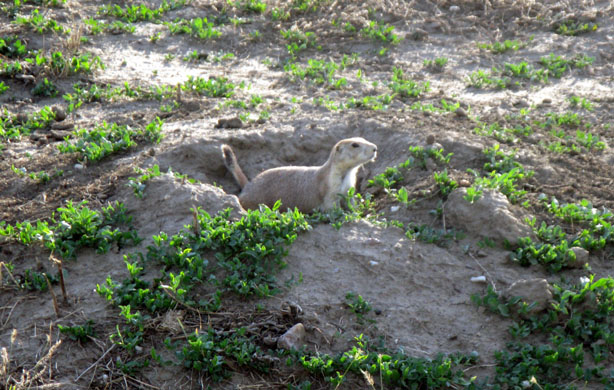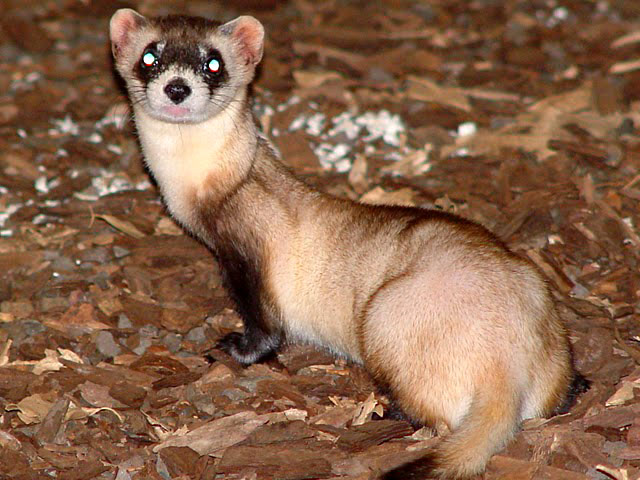Ferret bootcamp: Biology

© David Manly
The black-footed ferret is one of the most endangered mammals in the world, as well as in North America. It belongs to the weasel, or Mustelidae family of mammals, which includes the wolverine, badger and otter.
An adult ferret is usually half a metre in length, and weighs approximately two pounds, about as much as eight sticks of butter. It has a long cylindrical body with short legs, sharp claws and rounded ears.
The black-footed ferret is unique because of the black colouring on its face mask, feet and tip of its tail. The rest of the fur is light beige in colour with the exception of the face, which is white. This colouring serves as camouflage at night, as its black features blend perfectly with the darkness, breaking up its outline. This is useful, as the ferret is primarily a nocturnal mammal.
One of the most interesting features of the black-footed ferret is that it lives in the burrows of its prey, the prairie dog. While abundant many years ago, prairie dog populations have steadily dropped due to their pest-like ability to destroy crops. This created a limited area where ferret populations could occur.

Courtesy of Travis Livieri, USFWS
Once a ferret kills a prairie dog, it usurps its burrow and tunnels as its own for protection from predators, and to raise its young. It will even make renovations!
The black-footed ferret is also one of the only animals to show a unique green eye-shine when its eyes are exposed to a quick flash of light. Using a spotlight, this is the main way conservationists can find a ferret in the darkness.
Reproduction occurs in the early spring and results in a litter of usually three to four kits. They are born blind and colourless like most mammals, but grow quickly over the next few months. By the early summer, the ferrets have stopped nursing and have begun eating meat provided by their mother. Approximately 120 days after being born, around the end of summer, the ferrets are left in separate burrows and expected to fend for themselves from then on.
In the wild, it is rare for a ferret to live past four years, but in captivity, life expectancy can increase to nine.
The main threat for black-footed ferret populations in the wild are disease and human urbanization, but they are also prey for coyotes, owls, badgers, and foxes.
Return to the Ferret Bootcamp page or read about the history of the ferret here.